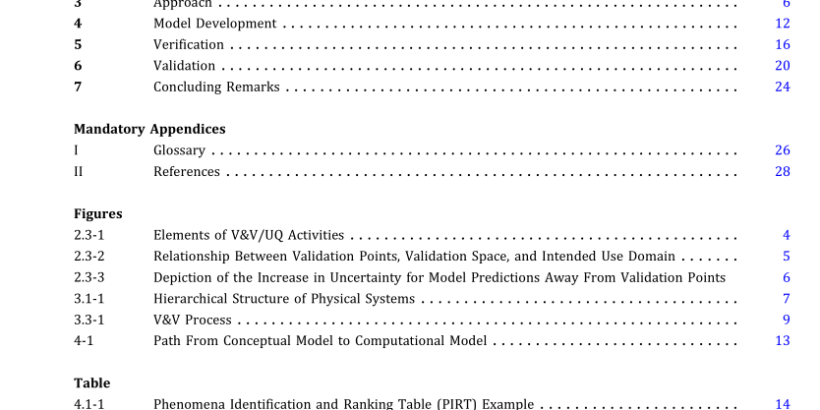ASME V&V 10-2019 pdf free download.Standard for Verification and Validation in Computational Solid Mechanics
3 APPROACH 3.1 Modeling Complex Systems Many real-world physical systems that would be the subject of model V&V are inherently complex. To address this . complexity and prepare a detailed description of the full system, it is helpful to recognize that the system being modeled is hierarchical in nature. As ilustrated in Figure 3.1-1, the hardware of a physical system is typically composed of subsys- tems, which contain assemblies. Each assembly consists of two or more subassemblies; a subassembly, in turn, consists of individual components. Each separate section of the hierarchy can be seen as a validation case, or an instance that needs to be validated. The top-level validation case in Figure 3.1-1 can be viewed as any level ofa real physical system. For example, it could be a complete aircraft, or it could be the wing of an aircraft. If an aircraft is the top-level validation case, it might be composed of subsystems such as the propulsion system, the structure/body, the control system, and the passenger system. Considering the structure as a subsystem, it might be composed of assemblies like the propulsion structure, the nose section, the wings, the fuselage, and the tail section. Similarly, an assembly such as the wings might contain subassemblies like the airfoil and the wing control surface, each of which is composed of components. Each of these subsets at all levels of the hierarchy can be considered a validation case that could be subjected to the validation process. In terms of V&V, the requirements for the model for the top-level validation case, as well as for all lower levels, depend on the intended use of the model.
3.2 Hierarchical Approach to V&V A top-down decomposition of the physical system into its hardware constituents, as discussed in para. 3.1, is the basis for developing a model of this system. However, the recommended approach to V&V is to develop such a hierarchy and then work from the bottom up, beginning at the lowest tier (i.e., the component level), to identify and describe the physical phenomena at each level that must be accurately simulated with the model. This bottom-up approach recognizes that, while some of the physical responses of components may be representative of a single physical phenomenon (such as deformation, natural frequencies, or buckling loads), at higher levels of the hierarchy, interaction effects not exhibited by the individual components are likely (such as effects of frictional interfaces and joints).
For example, a model of a subassembly consisting of a welded automobile frame could introduce behavior that is not present when individual struts are modeled separately. Building a model from the bottom up will result in a multitiered set of individual models [a system-level model and its embedded submodel[s]) and form the basis for defining validation experiments that need to be conducted at each tier of the hierarchy to ensure that the constituent models at each particular tier function appropriately. Models for components, subassemblies, assemblies, and subsystems that have been validated previously can and should be reused if the response mechanisms they have exhibited and the predictive accuracy they have demonstrated clearly meet the requirements of the new system. Figure 3.1-1 depicts an overview of the hierarchical approach to validation. The figure identifies the models that could be constructed at each tier, and highlights one potential path through the hierarchy starting with the “Aluminum Box Structure”at the component level and culminating with the “Aircraft” at the complete system level. In this example, validation of the system model will be achieved by consensus of the program experts if the responses of the complete vehicle in laboratory or field experiments are succesfully predicted.
The highest-tier validation experiments are typically either special cases of the expected operating conditions or idealized versions of the real world system. It is important to complete V&V with computations and experiments at the system level to assess whether the bottom-up approach adequately considered complex nonlinear interactions at all levels of the hierarchy (i.e., that the appropriate hierarchical decomposition was used). It may be tempting to perform validation of system models directly from data taken from tests of the complete system without new or archived validation at lower levels in the hierarchy. This can be problematic for a large number of components or if the subsystem models contain complex connections or interfaces, energy dissipation mechanisms, or highly nonlinear behavior. If there is poor agreement between the simulation results and the experiment, it is often difficult, if not impossible, to isolate which subsystem model is responsible for the discrepancy. Even if good agreement between calculation and experiment is observed, it is still possible that the model quality is poor because of error cancellation among the subsystem models. A better strategy is to conduct a sequence of experiments that builds confidence in the model’s ability to produce accurate simulations at multiple levels in the hierarchy.ASME V&V 10 pdf download.ASME V&V 10-2019 pdf free download
